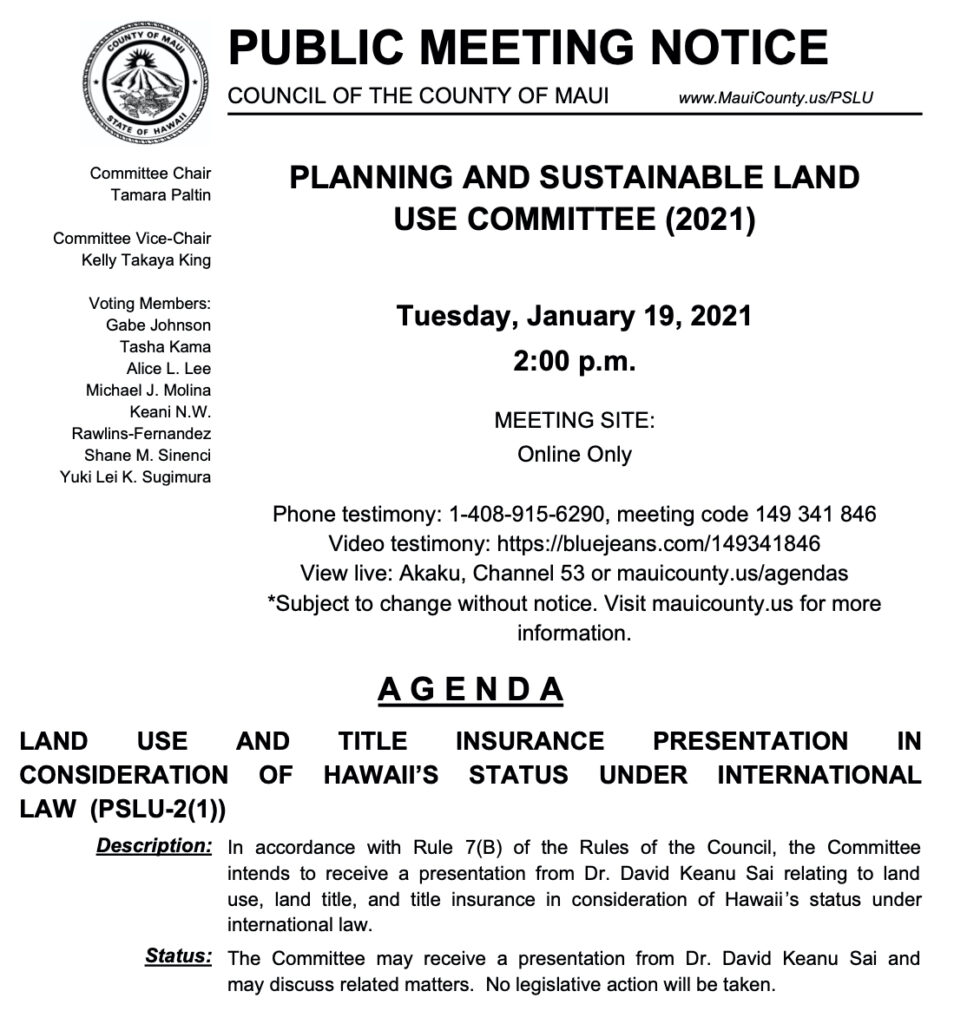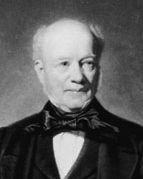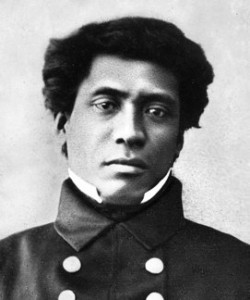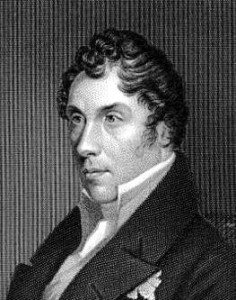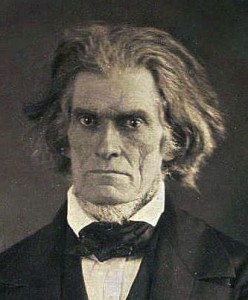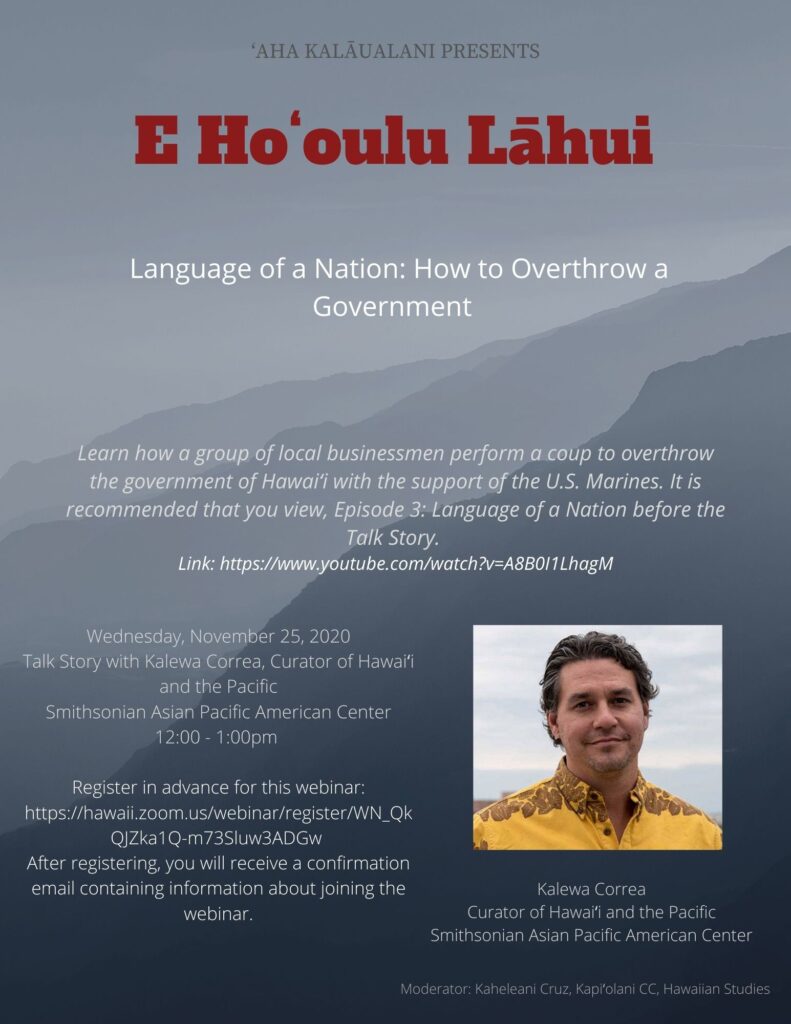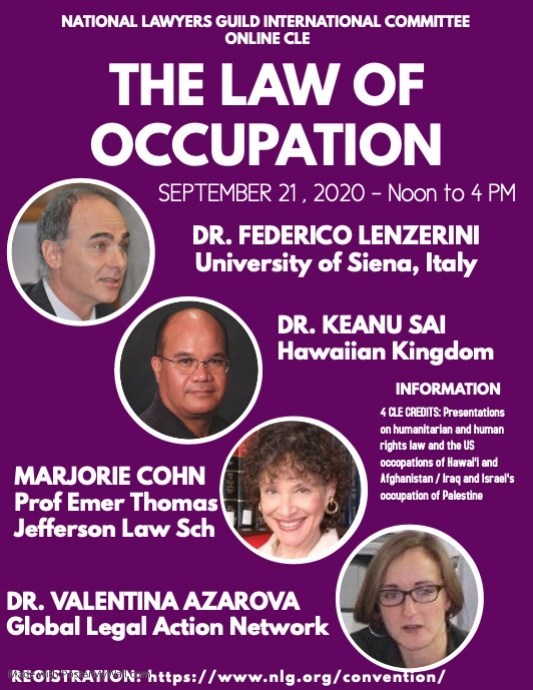In light of the severity of the mandate of the Royal Commission of Inquiry, established by the Hawaiian Council of Regency on April 17 2019, to investigate war crimes and human rights violations committed within the territorial jurisdiction of the Hawaiian Kingdom, the “authority” of the Council of Regency to appoint the Royal Commission is fundamental and, therefore, necessary to address within the rules of international humanitarian law, which is a component of international law. As the United States Supreme Court in The Paquete Habana, 175 U.S. 677, 700 (1900), explained:
International law is part of our law, and must be ascertained and administered by the courts of justice of appropriate jurisdiction as often as questions of right depending upon it are duly presented for their determination. For this purpose, where there is no treaty and no controlling executive or legislative act or judicial decision, resort must be had to the customs and usages of civilized nations, and, as evidence of these, to the works of jurists and commentators who by years of labor, research, and experience have made themselves peculiarly well acquainted with the subjects of which they treat. Such works are resorted to by judicial tribunals not for the speculations of their authors concerning what the law ought to be, but for trustworthy evidence of what the law really is.
According to Article 38(1) of the Statute of the International Court of Justice, “the teachings of the most highly qualified publicists of the various nations, [are] subsidiary means for the determination of rules of law.” Furthermore, §103(2)(c), Restatement Third—Foreign Relations Law of the United States, recognizes that “writings of scholars” are a source of international law in determining, in this case, whether the Council of Regency has been established in conformity with the rules of international humanitarian law. The writing of scholars, “whether a rule has become international law,” are not prescriptive but rather descriptive “of what the law really is.”
As head of the Royal Commission, Dr. Keanu Sai provided a narrative of the authority of the Council of Regency in its recent publication Royal Commission of Inquiry: Investigating War Crimes and Human Rights Violations Committed in the Hawaiian Kingdom (p. 18-23), a process that was unprecedented, for purposes of explanation and understanding, but it may not be considered authoritative as to whether it meets the rules of international law. Therefore, in order to satisfy this requirement and to remove any questions as to the authority of the Council of Regency, Federico Lenzerini, Ph.D., a professor of international law from the University of Siena, Italy, was requested, by letter dated May 11, 2020, to provide a legal opinion on the following:
First, does the Regency have the authority to represent the Hawaiian Kingdom as a State that has been under a belligerent occupation by the United States of America since 17 January 1893?
Second, assuming the Regency does have the authority, what effect would its proclamations have on the civilian population of the Hawaiian Islands under international humanitarian law, to include its proclamation recognizing the State of Hawai‘i and its Counties as the administration of the occupying State on 3 June 2019?
Third, can you provide comment on the working relationship between the Regency and the administration of the occupying State under international humanitarian law?
On May 24, 2020, Professor Lenzerini completed his legal opinion. His opinion begins by stating:
In order to ascertain whether the Regency has the authority to represent the Hawaiian Kingdom as a State, it is preliminarily necessary to ascertain whether the Hawaiian Kingdom can actually be considered a State under international law. To this purpose, two issues need to be investigated, i.e.: a) whether the Hawaiian Kingdom was a State at the time when it was militarily occupied by the United States of America, on 17 January 1893; b) in the event that the solution to the first issue would be positive, whether the continuous occupation of Hawai’i by the United States, from 1893 to present times, has led the Hawaiian Kingdom to be extinguished as an independent State and, consequently, as a subject of international law.
After addressing the historical record and citing the Permanent Court of Arbitration, he concluded, “[i]t is therefore unquestionable that in the 1890s the Hawaiian Kingdom was an independent State and, consequently, a subject of international law. This presupposed that its territorial sovereignty and internal affairs could not be legitimately violated by other States.”
After concluding the Hawaiian Kingdom did exist as a subject of international law, Professor Lenzerini stated, “it is now necessary to determine whether the continuous occupation of Hawai‘i by the United States from 1893 to present times has led the Hawaiian Kingdom to be extinguished as an independent State and, consequently, as a subject of international law.” He addressed this issue “by means of a careful assessment carried out through ‘having regard inter alia to the lapse of time since the annexation [by the United States], subsequent political, constitutional and international developments, and relevant changes in international law since the 1890s.’”
Aside from all speculative arguments, Professor Lenzerini concludes, “the argument which appears to overcome all the others is that a long-lasting and well-established rule of international law exists establishing that military occupation, irrespective of the length of its duration, cannot produce the effect of extinguishing the sovereignty and statehood of the occupied State.” On this subject, he provides an English translation of a statement made by the Swiss arbitrator Eugène Borel in the 1925 Ottoman Public Debt case:
Whatever are the effects of the occupation of a territory by the enemy before the re-establishment of peace, it is certain that such an occupation alone cannot legally determine the transfer of sovereignty […] The occupation, by one of the belligerents, of […] the territory of the other belligerent is nothing but a pure fact. It is a state of things essentially provisional, which does not legally substitute the authority of the invading belligerent to that of the invaded belligerent.
Professor Lenzerini also cites renowned jurist Oppenheim who stated that “[t]he only form in which a cession [of sovereignty] can be effected is an agreement embodied in a treaty between the ceding and the acquiring State. Such treaty may be the outcome of peaceable negotiations or of war.” Without a treaty with the Hawaiian Kingdom ceding its territory to the United States, he concludes that, “according to a plain and correct interpretation of the relevant legal rules, the Hawaiian Kingdom cannot be considered, by virtue of the prolonged US occupation, as extinguished as an independent State and a subject of international law, despite the long and effective exercise of the attributes of government by the United States over Hawaiian territory.” Therefore, the Hawaiian Kingdom “has been under uninterrupted belligerent occupation by the United States of America, from 17 January 1893 up to the moment of this writing.”
After confirming the continuity of the Hawaiian Kingdom, Professor Lenzerini reviewed the process by which the Council of Regency was formed, he further concludes “on the basis of the doctrine of necessity,…the Council of Regency possesses the constitutional authority to temporarily exercise the Royal powers of the Hawaiian Kingdom.” He further concludes “that the Regency actually has the authority to represent the Hawaiian Kingdom as a State, which has been under a belligerent occupation by the United States of America since 17 January 1893, both at the domestic and international level.” In international proceedings at the Permanent Court of Arbitration from 1999-2001, the Council of Regency did represent the Hawaiian Kingdom in Larsen v. Hawaiian Kingdom, and the Dr. Sai served as the Hawaiian Kingdom’s agent and head of its legal team.
In its capacity as representing the Hawaiian Kingdom, Professor Lenzerini concludes that “the Council of Regency is exactly in the same position of a government of a State under military occupation, and is vested with the rights and powers recognized to governments of occupied States pursuant to international humanitarian law.” Therefore, “the ousted government being the entity which represents the ‘legitimate government’ of the occupied territory…may ‘attempt to influence life in the occupied area out of concern for its nationals, to undermine the occupant’s authority, or both. One way to accomplish such goals is to legislate for the occupied population.’”
Regarding legislation by governments of occupied States, Professor Lenzerini cites the Swiss Federal Tribunal which held that “[e]nactments by the [exiled government] are constitutionally laws of the [country] and applied [from the beginning] to the territory occupied […] even though they could not be effectively implemented until the liberation.” He explains that “[a]though this position was taken with specific regard to exiled governments, and the Council of Regency was not established in exile but in situ, the conclusion, to the extent that it is considered valid, would not substantially change as regards the Council of Regency itself.” Hence,
under international humanitarian law, the proclamations of the Council of Regency are not divested of effects as regards the civilian population of the Hawaiian Islands. In fact, considering these proclamations as included in the concept of “legislation”…they might even, if the concrete circumstances of the case so allow, apply retroactively at the end of the occupation, on the condition that the legislative acts in point do not “disregard the rights and expectations of the occupied population.” It is therefore necessary that the occupied government refrains “from using the national law as a vehicle to undermine public order and civil life in the occupied area.”
When the legislative function is exercised by the Council of Regency, through its proclamations, it “is subjected to the condition of not undermining the rights and interests of the civilian population,” and therefore “may be considered applicable to local people, unless such applicability is explicitly refuted by the occupying authority.” “In this regard,” states Professor Lenzerini, “it is reasonable to assume that the occupying power should not deny the applicability of the…proclamations when they do not undermine, or significantly interfere with the exercise of, its authority.”
Addressing the June 3, 2019 proclamation of the Council of Regency recognizing the State of Hawai‘i and the Counties as the administration of the Occupying State, Professor Lenzerini states, “this Proclamation pursues the clear purpose of ensuring the protection of the Hawaiian territory and the people residing therein against the prejudicial effects which may arise from the occupation.” He explains that “it represents a legislative act aimed at furthering the interests of the civilian population through ensuring the correct administration of their rights and of the land. As a consequence, it has the nature of an act that is equivalent, in its rationale and purpose (although not in its precise subject), to a piece of legislation concerning matters of personal status of the local population, requiring the occupant to give effect to it.” He, therefore, concludes that “the proclamations of the Council of Regency—including the Proclamation recognizing the State of Hawai‘i and its Counties as the administration of the occupying State on 3 June 2019—have on the civilian population the effect of acts of domestic legislation aimed at protecting their rights and prerogatives, which should be, to the extent possible, respected and implemented by the occupying power.”
In his commentary on the working relationship between the Regency and the administration of the occupying State, Professor Lenzerini establishes that the law of occupation “allows for authority to be shared by the Occupying Power and the occupied government, provided the former continues to bear the ultimate and overall responsibility for the occupied territory.” By implementing the legislation of the Council of Regency, “the occupying power would better comply with its obligation, existing under international humanitarian law and human rights law, to guarantee and protect the human rights of the local population. It follows that the occupying power has a duty—if not a proper legal obligation—to cooperate with the [Council of Regency] to better realize the rights and interest of the civilian population, and, more in general, to guarantee the correct administration of the occupied territory.” Professor Lenzerini concludes:
[T]he working relationship between the Regency and the administration of the occupying State should have the form of a cooperative relationship aimed at guaranteeing the realization of the rights and interests of the civilian population and the correct administration of the occupied territory, provided that there are no objective obstacles for the occupying power to cooperate and that, in any event, the “supreme” decision-making power belongs to the occupying power itself. This conclusion is consistent with the position of the latter as “administrator” of the Hawaiian territory, as stated in the Council of Regency’s Proclamation recognizing the State of Hawai‘i and its Counties as the administration of the occupying State of June 3, 2019 and presupposed by the pertinent rules of international humanitarian law.
This cooperative relationship, however, is “premised on both the Council of Regency and the State of Hawai‘i and its Counties [to] ensure [their] compliance with international humanitarian law.” Compliance with the law of occupation requires the State of Hawai‘i to transform itself into a government recognized under international humanitarian law. United States practice during occupations requires the establishment of a Military government, which “is the form of administration by which an occupying power exercises governmental authority over occupied territory. The necessity for such government arises from the failure or inability of the legitimate government to exercise its functions on account of the military occupation (U.S. Army Field Manual 27-10, para. 362).” The establishment of Military government is not limited to the United States military, but also applies to a proxy of the occupying power that is in effective control of Hawaiian territory such as the State of Hawai‘i and its Counties. United States practice recognizes that an occupying power “has the duty of establishing [a Military government] when the government of such territory is absent or unable to function properly (U.S. Army and Navy Manual of Civil Affairs Military Government, Field Manual 27-5, p. 4).”
Furthermore, “[i]t is immaterial whether the government over an [occupied State’s] territory consists in a military or civil or mixed administration. Its character is the same and the source of its authority is the same. It is a government imposed by force, and the legality of its acts is determined by the law of war (FM 27-10, para. 368).” And “restrictions placed upon the authority of a belligerent government cannot be avoided by a system of using a puppet government, central or local, to carry out acts which would be unlawful if performed by the occupant. Acts induced or compelled by the occupant are nonetheless its acts (FM 27-10, para. 366).”
In the current state of things, the State of Hawai‘i is not a Military government but rather a “puppet government” or proxy of the United States that continues to commit the war crime of usurpation of sovereignty by unlawfully imposing or applying “legislative or administrative measures of the occupying power going beyond those required by what is necessary for military purposes of the occupation (Royal Commission of Inquiry, p. 155-57, 167).” The volitional element, or criminal intent, of usurpation of sovereignty, according to Professor William Schabas, is that the “perpetrator was aware of factual circumstances that established the existence of the armed conflict and subsequent occupation (RCI, p. 167).” There is no statute of limitation for war crimes but it is customary for individuals to be prosecuted for the commission of war crimes up to 80 years after the alleged war crime was committed given the life expectancy of individuals (RCI, p. 155).
In 2012, member States of the United Nations committed themselves to “ensuring that impunity is not tolerated for genocide, war crimes, crimes against humanity and for violations of international humanitarian law and gross violations of human rights law, and that such violations are properly investigated and appropriately sanctioned, including by bringing the perpetrators of any crimes to justice, through national mechanisms or, where appropriate, regional or international mechanisms, in accordance with international law.”
According to the applicable rules of international law, as provided in the legal opinion of Professor Lenzerini, the Council of Regency, first, does have the lawful authority to represent the Hawaiian Kingdom as a State that has been under a belligerent occupation by the United States since January 17, 1893; second, its proclamations do have legal effects on the civilian population of the Hawaiian Islands, to include its proclamation recognizing the State of Hawai‘i and its Counties as the administration of the occupying State on June 3, 2019; and, third, international humanitarian law does provide for a cooperative relationship between the Regency and the administration of the occupying State—the State of Hawai‘i and its Counties. Furthermore, the mandate of the Royal Commission, which was established by “legislation” of the Council of Regency, is also confirmed by the legal opinion and the applicable rules of international law.


